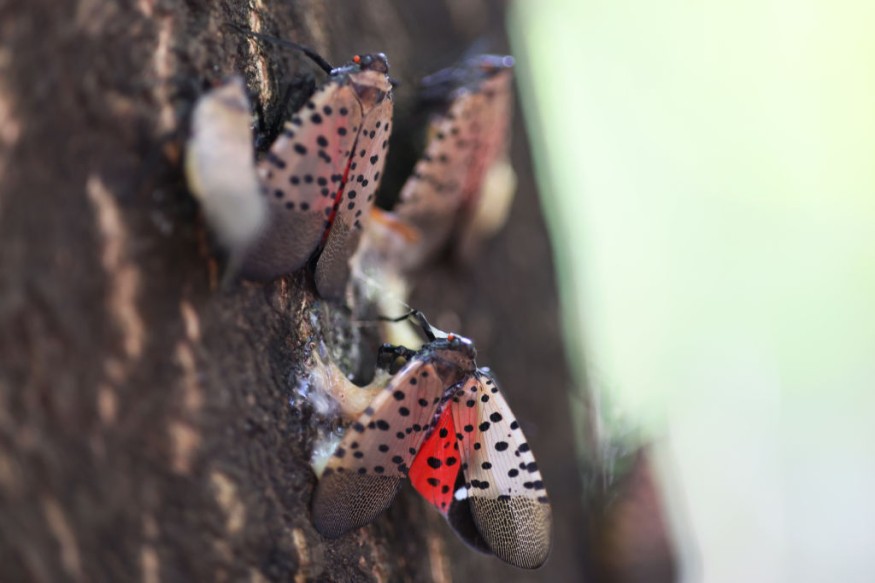The new report showed that the invasive spotted lanternflies were spotted in Illinois as they spread over the Eastern US.
The alarming spread of the invasive spotted lanternflies can cause severe damage to trees and agricultural crops.
In the US, a recent report showed it has been found in 14 states, particularly in New York, New Jersey, Connecticut, Ohio, Pennsylvania, Maryland and Indiana.
Residents who find invasive spotted lanternflies are advised to report them to authorities or contain the pest. Although they look attractive with their colors, spotted lanternflies can unleash devasting damage to crops.
Invasive Spotted Lanternflies: Why is it a threat to trees and crops?

The spotted lanternfly, also known as Lycorma delicatula, was first found in Pennsylvania in 2014 and has spread over the Eastern US. It is recognized to be native to China.
The invasive species can't travel in distant areas, but it can hide in public transportation (trains or cars), allowing them to bring significant threats to other US states.
In Illinois, the Department of Agriculture reported the sightings of the invasive spotted lanternflies. It is considered the first lanternfly found in the state.The species is not harmful to humans.
However, the report noted that the spotted lanternflies could not cause an alarming tree or plant death in the region. The invasive species can likely bring nuisance and impact agritourism in Illinois.
According to the reports, the spotted lanternflies can put at risk the following:
- Maple Trees
- Willow Trees
- Walnut Trees
- Poplar Trees
- Pine Trees
- Sycamore Trees
- Apples
- Cherries
- Grapes
- Plums
- Peaches
- Almonds
- Hops
- Oak trees
People who spot the egg masses of spotted lanternflies should contain them in a zip bag with sanitizer. When lanternflies cause severe damage and a massive population, quarantine could be needed to control the potential damage.
They can infest plants or trees by excreting honeydew, causing the growth of black sooty mold. When spotted lanternflies become uncontrollable, it can result in economic loss to farms, agriculture and other industries in the US.
Also Read : 16 Weird-Looking Parasitoid Wasps in Vietnam: Recent Discovery Can Decipher Unknown Parasitic Behaviors
Oriental Fruit Fly in the US
According to the report, the first case of the oriental fruit fly was detected in Florida in 2002 and 2015. It has been detected in Hawaii and California. It can quickly spread and threaten significant fruits in the US, including apples, apricots, peaches, mangoes and tomatoes.
The oriental fruit fly can be recognizable by their clear wings and yellow-dark markings on their abdomen. The species is native to parts of Tropical Asia.
The female oriental fruit fly can lay eggs from 1,200 to 3,000 eggs.
Related Article : Unusual Toxic Invasive Worm Discovered in U.S. That Can Make Pet Sick
For more similar stories, don't forget to follow Nature World News.
© 2025 NatureWorldNews.com All rights reserved. Do not reproduce without permission.





